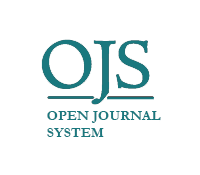The Effect of Medical Managers' Accountability To Managerial Performance: The Role Of Commitment As Mediating Variable
DOI:
https://doi.org/10.22219/jrak.v14i2.33410Keywords:
Commitment, Felt Accountability, Medical Managers’, Managerial PerformanceAbstract
Research Objective: This research aims to test the felt accountability of medical managers who have a hybrid role in improving managerial performance, through commitment as a mediating variable.
Method/approach: This research is survey research using questionnaires distributed directly to respondents. The data obtained consisted of 460 medical manager respondents from Community Health Centers (Puskesmas) and Pratama Clinics. Sampling used purposive sampling technique. Data analysis was carried out using structural equation models.
Results: The research results show that medical managers who have a sense of accountability or responsibility for their managerial work will be more motivated to improve managerial performance through their commitment.
Practice implications: Its importance for complex organizations such as Healthcare. Specifically, this research offers insight into organizational support for hybrid identity constructs, such as a doctor taking on the role of medical manager.
Originality/novelty: Research on felt accountability is still rarely carried out, especially in developing countries like Indonesia.
Downloads
References
Afsar, B., & Badir, Y. (2016). The mediating role of psychological empowerment on the relationship between person-organization fit and innovative work behaviour. Journal of Chinese Human Resource Management, 7(1). https://doi.org/10.1108/JCHRM-11-2015-0016
Amalia, S. R., & Wulansari, N. A. (2017). Pengaruh Person Organization Fit terhadap Perilaku Kerja Inovatif melalui Pemberdayaan Psikologis sebagai Mediasi pada Karyawan KSPPS di Semarang. Management Analysis Journal, 6(2), 223-232. https://doi.org/10.15294/MAJ.V6I2.18932
Arnaboldi, M., Lapsley, I., & Steccolini, I. (2015). Performance management in the public sector: The ultimate challenge. Financial Accountability & Management, 31(1), 1-22.
Blumberg, B., Cooper, D., & Schindler, P. (2014). EBOOK: Business Research Methods. McGraw Hill.
Chin, W. W. (1998). The partial least squares approach to structural equation modeling. Modern methods for business research, 295(2), 295-336.
Chinn, W. W. (1998). The Partial Least Squares Approach to Structural Equation Modelling. Modern Methods for Business Research, 29(2), 295-336.
Croft, C., Currie, G., & Lockett, A. (2015). Broken ‘two‐way windows’? An exploration of professional hybrids. Public Administration, 93(2), 380-394.
Dar, S. (2014). Hybrid accountabilities: When western and non-western accountabilities collide. Human relations, 67(2), 131-151.
Databoks. (2021). Tren Jumlah Puskesmas di Indonesia Semakin Meningkat https://databoks.katadata.co.id/datapublish/2021/10/08/tren-jumlah-puskesmas-di-indonesia-semakin-meningkat
Eijkholt, M., Broekman, M., Balak, N., & Mathiesen, T. (2021). Three pitfalls of accountable healthcare rationing. Journal of medical ethics, 47(12), e22-e22.
Ewert, B. (2020). Focusing on quality care rather than ‘checking boxes’: How to exit the labyrinth of multiple accountabilities in hybrid healthcare arrangements. Public Administration, 98(2), 308-324.
Fornell, C., & Larcker, D. F. (1981). Evaluating structural equation models with unobservable variables and measurement error. Journal of marketing research, 18(1), 39-50.
Frink, D. D., & Klimoski, R. J. (1998). Toward a theory of accountability in organizations and human resource management.
Gebreiter, F., & Hidayah, N. N. (2019). Individual responses to competing accountability pressures in hybrid organisations: the case of an English business school. Accounting, Auditing & Accountability Journal, 32(3), 727-749.
Ghozali, I. (2016). Aplikasi Analisis Multivariate dengan Program SPSS Edisi Kesembilan. Semarang: Badan Penerbit Universitas Diponegoro. Alfabeta, 1(1), 1-99.
Grossi, G., Kallio, K.-M., Sargiacomo, M., & Skoog, M. (2020). Accounting, performance management systems and accountability changes in knowledge-intensive public organizations: a literature review and research agenda. Accounting, Auditing & Accountability Journal, 33(1), 256-280.
Hair, J. F., Astrachan, C. B., Moisescu, O. I., Radomir, L., Sarstedt, M., Vaithilingam, S., & Ringle, C. M. (2021). Executing and interpreting applications of PLS-SEM: Updates for family business researchers. Journal of Family Business Strategy, 12(3), 100392.
Hair, J. F., Money, A. H., Samouel, P., & Page, M. (2007). Research methods for business. Education+ Training, 49(4), 336-337.
Hair, J. F., Risher, J. J., Sarstedt, M., & Ringle, C. M. (2019). When to use and how to report the results of PLS-SEM. European business review, 31(1), 2-24.
Hall, A. T., & Ferris, G. R. (2011). Accountability and extra-role behavior. Employee Responsibilities and Rights Journal, 23, 131-144.
Henseler, J., Ringle, C. M., & Sarstedt, M. (2015). A new criterion for assessing discriminant validity in variance-based structural equation modeling. Journal of the academy of marketing science, 43, 115-135.
Hochwarter, W. A., Kacmar, C., & Ferris, G. R. (2003). Accountability at work: An examination of antecedents and consequences. annual meeting of the Society of Industrial and Organizational Psychology, Orlando, FL,
Hood, C. (1995). The “new public management” in the 1980s: Variations on a theme. Accounting, organizations and society, 20(2-3), 93-109.
Hoque, Z., & Adams, C. (2011). The rise and use of balanced scorecard measures in Australian government departments. Financial Accountability & Management, 27(3), 308-334.
Ittner, C. D., Larcker, D. F., & Randall, T. (2003). Performance implications of strategic performance measurement in financial services firms. Accounting, organizations and society, 28(7-8), 715-741.
Jung, D. I., Chow, C., & Wu, A. (2003). The role of transformational leadership in enhancing organizational innovation: Hypotheses and some preliminary findings. Leadership Quarterly, 14(4-5). https://doi.org/10.1016/S1048-9843(03)00050-X
Kinicki, A. J., Prussia, G. E., Wu, B. J., & McKee-Ryan, F. M. (2004). A covariance structure analysis of employees' response to performance feedback. Journal of applied psychology, 89(6), 1057.
Lapsley, I. (2008). The NPM agenda: back to the future. Financial Accountability & Management, 24(1), 77-96.
Lapsley, I. (2009). New public management: The cruellest invention of the human spirit? 1. Abacus, 45(1), 1-21.
Levay, C., Jönsson, J., & Huzzard, T. (2020). Quantified control in healthcare work: Suggestions for future research. Financial Accountability & Management, 36(4), 461-478.
Lewis, B. R., Templeton, G. F., & Byrd, T. A. (2005). A methodology for construct development in MIS research. European Journal of Information Systems, 14, 388-400.
Macinati, M. S. (2010). NPM reforms and the perception of budget by hospital clinicians: Lessons from two case‐studies. Financial Accountability & Management, 26(4), 422-442.
Macinati, M. S., & Anessi-Pessina, E. (2014). Management accounting use and financial performance in public health-care organisations: Evidence from the Italian National Health Service. Health Policy, 117(1), 98-111.
Macinati, M. S., & Rizzo, M. G. (2016). Exploring the link between clinical managers involvement in budgeting and performance: Insights from the Italian public health care sector. Health care management review, 41(3), 213-223.
Macinati, M. S., Rizzo, M. G., & Hoque, Z. (2022). Medical managers’ financial accountability: The effects of feedback on work outcome and managerial performance. Financial Accountability & Management, 38(4), 530-553.
MacKenzie, S. B., & Podsakoff, P. M. (2012). Common method bias in marketing: Causes, mechanisms, and procedural remedies. Journal of retailing, 88(4), 542-555.
Memon, M. A., Ting, H., Cheah, J.-H., Thurasamy, R., Chuah, F., & Cham, T. H. (2020). Sample size for survey research: review and recommendations. Journal of Applied Structural Equation Modeling, 4(2), 1-20.
Mero, N. P., Guidice, R. M., & Anna, A. L. (2006). The interacting effects of accountability and individual differences on rater response to a performance‐rating task. Journal of applied social psychology, 36(4), 795-819.
Mero, N. P., Guidice, R. M., & Werner, S. (2014). A field study of the antecedents and performance consequences of perceived accountability. Journal of management, 40(6), 1627-1652.
Rana, T., & Hoque, Z. (2020). Institutionalising multiple accountability logics in public services: Insights from Australia. The British Accounting Review, 52(4), 100919.
Rana, T., Hoque, Z., & Jacobs, K. (2019). Public sector reform implications for performance measurement and risk management practice: insights from Australia. Public Money & Management, 39(1), 37-45.
Revilla, M. A., Saris, W. E., & Krosnick, J. A. (2014). Choosing the number of categories in agree–disagree scales. Sociological methods & research, 43(1), 73-97.
Schillemans, T. (2016). Calibrating Public Sector Accountability: Translating experimental findings to public sector accountability. Public Management Review, 18(9), 1400-1420.
Sekaran, U., & Bougie, R. (2016). Research methods for business: A skill building approach. john wiley & sons.
Shmueli, G., & Koppius, O. R. (2011). Predictive analytics in information systems research. MIS quarterly, 553-572.
Shmueli, G., Ray, S., Estrada, J. M. V., & Chatla, S. B. (2016). The elephant in the room: Predictive performance of PLS models. Journal of Business Research, 69(10), 4552-4564.
Shmueli, G., Sarstedt, M., Hair, J. F., Cheah, J.-H., Ting, H., Vaithilingam, S., & Ringle, C. M. (2019a). Predictive model assessment in PLS-SEM: guidelines for using PLSpredict. European journal of marketing, 53(11), 2322-2347.
Shmueli, G., Sarstedt, M., Hair, J. F., Cheah, J. H., Ting, H., Vaithilingam, S., & Ringle, C. M. (2019b). Predictive model assessment in PLS-SEM: guidelines for using PLSpredict. European Journal of Marketing, 53(11). https://doi.org/10.1108/EJM-02-2019-0189
Singh, M., & Sarkar, A. (2012). The relationship between psychological empowerment and innovative behavior: A dimensional analysis with job involvement as mediator. Journal of Personnel Psychology, 11(3). https://doi.org/10.1027/1866-5888/a000065
Vriens, D., Vosselman, E., & Groß, C. (2018). Public professional accountability: A conditional approach. Journal of Business Ethics, 153, 1179-1196.
Yildiz, B., Uzun, S., uuml, & meyra. (2019). Drivers of Innovative Behaviors: The Moderator Roles of Perceived Organizational Support and Psychological Empowerment. SSRN Electronic Journal. https://doi.org/10.2139/ssrn.3335714
Downloads
Published
Issue
Section
License
Copyright (c) 2024 Suryo Pratolo, Tiyas Puji Utami

This work is licensed under a Creative Commons Attribution-NonCommercial-ShareAlike 4.0 International License.

Jurnal Reviu Akuntansi dan Keuangan is licensed under a Creative Commons Attribution-NonCommercial-ShareAlike 4.0 International License.
Authors who publish with this journal agree to the following terms:
- Authors retain copyright and grant the journal right of first publication with the work simultaneously licensed under a Creative Commons Attribution-NonCommercial-ShareAlike 4.0 International License that allows others to share the work with an acknowledgement of the work's authorship and initial publication in this journal.
- Authors are able to enter into separate, additional contractual arrangements for the non-exclusive distribution of the journal's published version of the work (e.g., post it to an institutional repository or publish it in a book), with an acknowledgement of its initial publication in this journal.
- Authors are permitted and encouraged to post their work online (e.g., in institutional repositories or on their website) prior to and during the submission process, as it can lead to productive exchanges, as well as earlier and greater citation of published work (See The Effect of Open Access).










